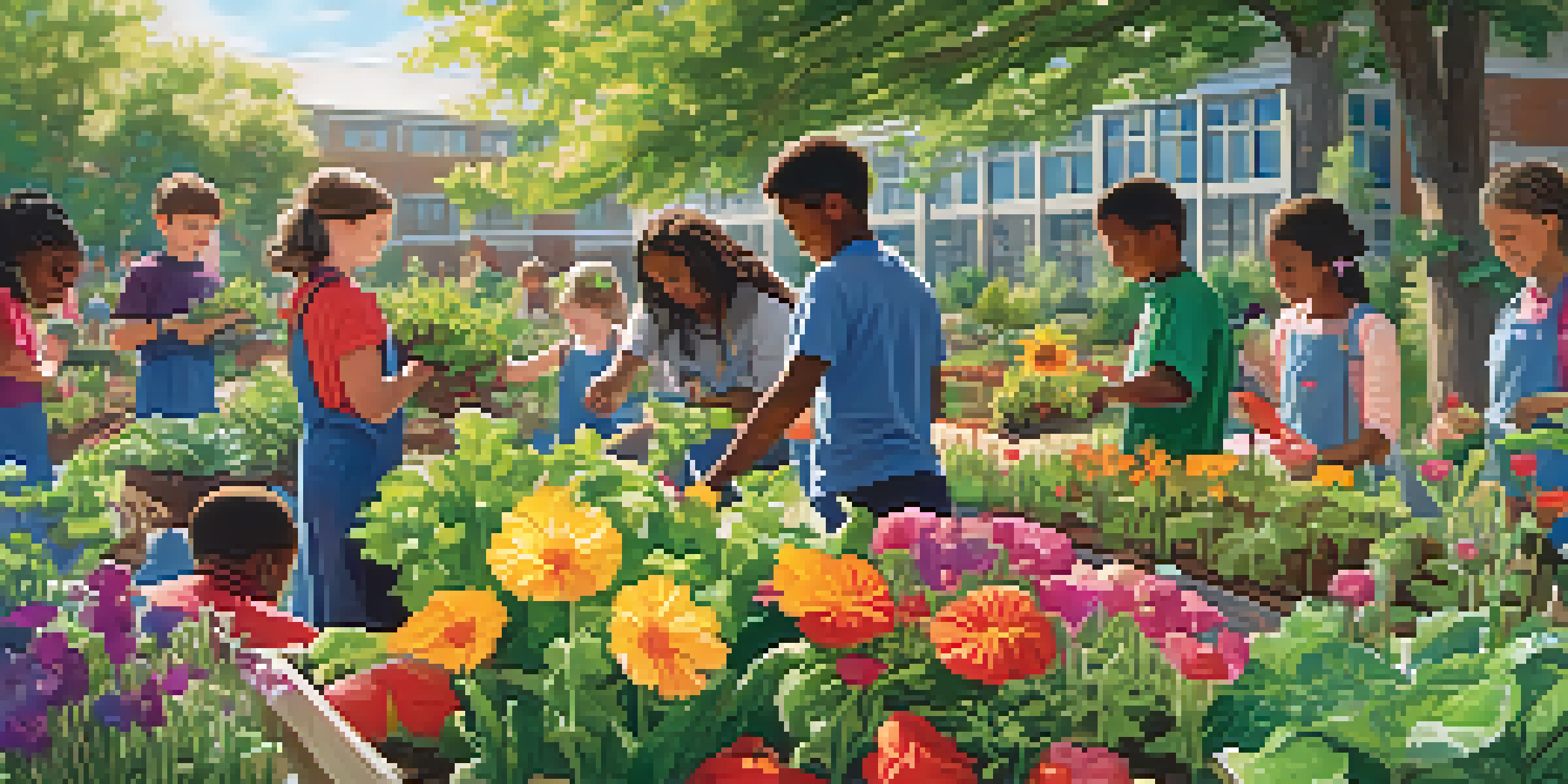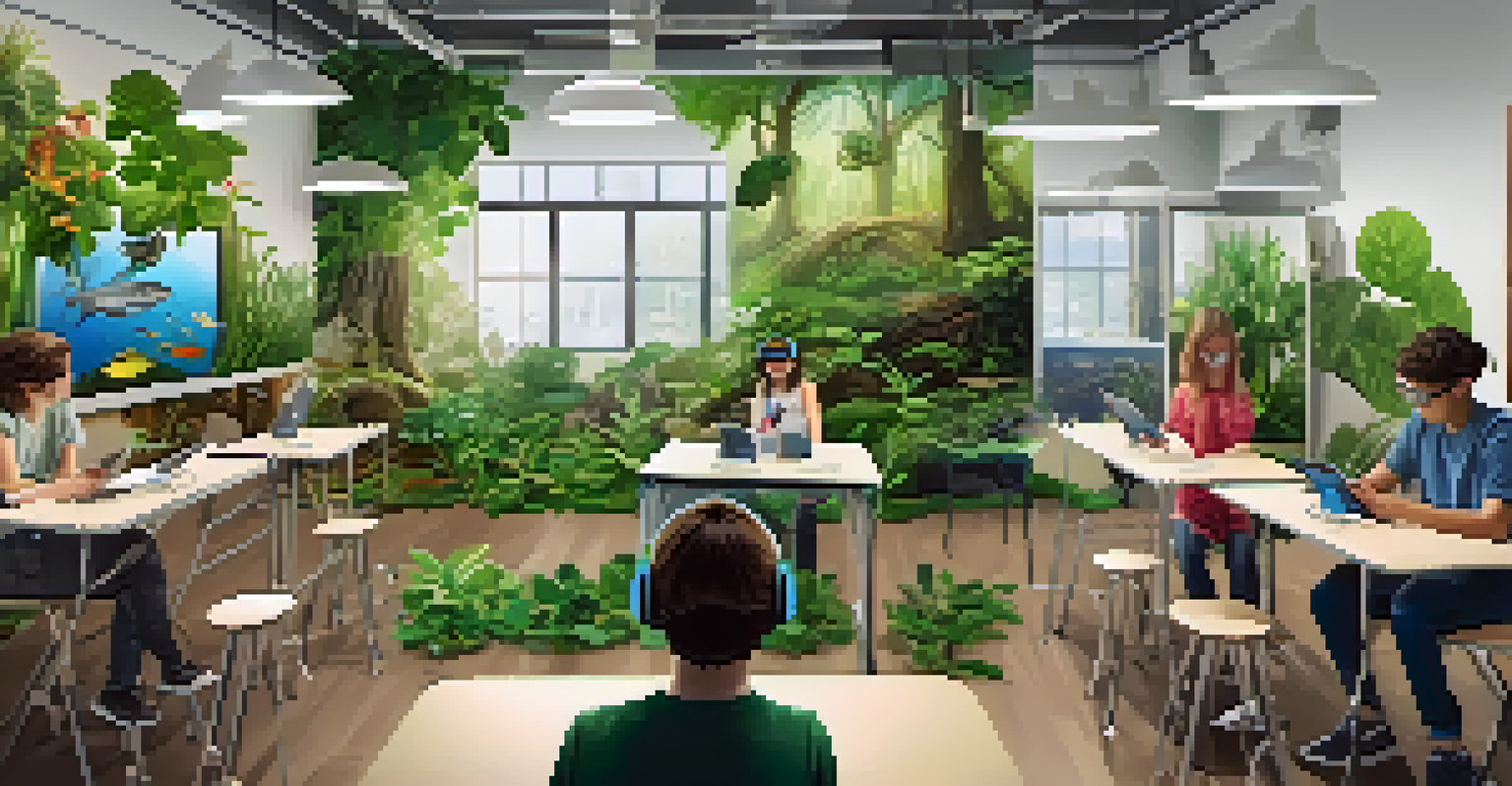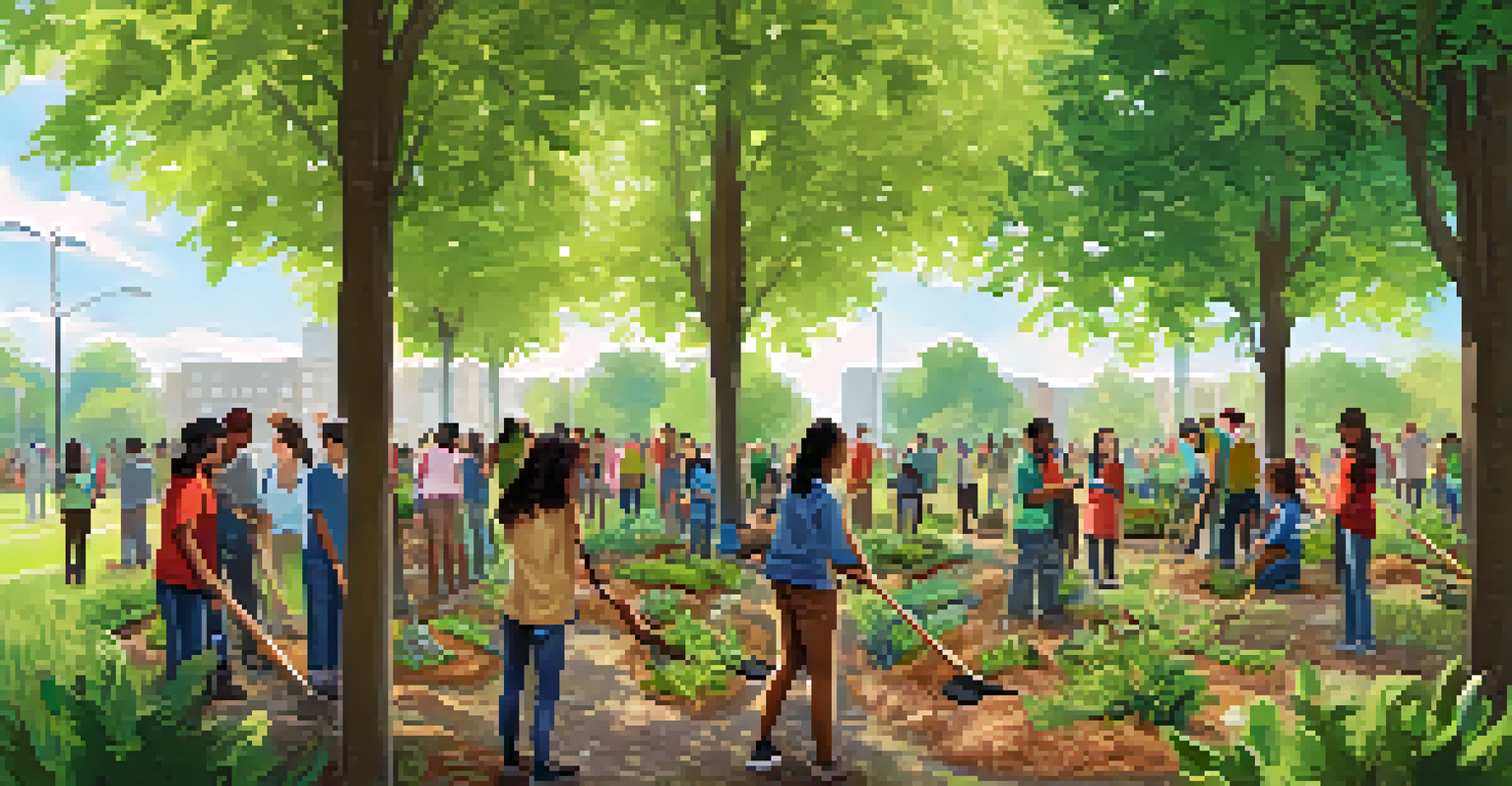Promoting Sustainable Practices in Plant Education Programs

Understanding the Importance of Sustainability in Education
Sustainability in education is not just a trend; it's a necessity. It involves teaching students the importance of conserving resources and preserving the environment for future generations. In plant education programs, this means integrating sustainable practices that encourage responsible growing and management of plant resources.
Education is the most powerful weapon which you can use to change the world.
By emphasizing sustainability, educators can help students understand the interconnectedness of ecosystems and human impact on the environment. For example, discussing the carbon cycle can illustrate how plants play a crucial role in absorbing carbon dioxide, thus promoting cleaner air. This connection fosters a sense of responsibility and awareness in students, making them more mindful of their environmental footprint.
Moreover, sustainable education can spark a passion for environmental stewardship among students. When they learn about topics like permaculture or native plant gardening, they become advocates for sustainable practices in their communities, creating a ripple effect of positive change.
Incorporating Hands-On Learning Activities
One effective way to promote sustainability in plant education is through hands-on learning activities. These can include starting a school garden, where students can engage directly with the planting and care of various species. This experiential learning not only solidifies their understanding of plant biology but also teaches them about sustainable gardening techniques.

For instance, students can learn about composting, crop rotation, and organic pest control while managing their school garden. These practices not only enhance soil health but also reduce the need for chemical fertilizers and pesticides. By actively participating in these activities, students are more likely to internalize the principles of sustainability.
Sustainability is Crucial in Education
Integrating sustainability into education fosters environmental awareness and responsibility among students.
Additionally, hands-on projects can be tied into broader community initiatives, such as local tree-planting programs or urban beautification projects. This community involvement reinforces the importance of sustainability beyond the classroom, encouraging students to apply their knowledge in real-world settings.
Utilizing Technology and Digital Resources
In today’s digital age, leveraging technology can significantly boost sustainable practices in plant education programs. Online platforms offer a wealth of resources, from virtual field trips to interactive modules on plant biology. These tools can enhance learning experiences, making sustainability concepts more accessible and engaging for students.
The greatest threat to our planet is the belief that someone else will save it.
For example, virtual reality can transport students to different ecosystems, allowing them to see firsthand the impact of human activities on plant life. This immersive experience can deepen their understanding of sustainability and motivate them to take action. Similarly, mobile apps can help students track their gardening progress, monitor plant health, and learn about eco-friendly practices.
Moreover, technology can facilitate collaboration among students across different regions. By participating in online forums or projects, students can share their experiences and learn from one another, fostering a global perspective on sustainability in plant education.
Creating a Curriculum Focused on Local Flora
A curriculum that emphasizes local flora can significantly enhance sustainability in plant education programs. By focusing on native plants, students learn about the unique ecosystems in their region and the importance of biodiversity. This localized approach not only cultivates appreciation for their natural surroundings but also promotes conservation efforts.
For instance, students can explore how native plants support local wildlife and contribute to the health of their ecosystems. Activities like field trips to local parks or nature reserves can provide firsthand experiences, making lessons about plant conservation more tangible and relatable. Engaging with local flora helps students understand the critical role they play in maintaining ecological balance.
Hands-On Learning Enhances Engagement
Experiential activities like school gardens help students internalize sustainable practices through direct involvement.
Additionally, fostering a connection with local flora can inspire students to participate in conservation projects, such as planting native species in school gardens or community spaces. This hands-on involvement reinforces their commitment to sustainability and empowers them to make meaningful contributions to their environment.
Encouraging Community Involvement and Outreach
Community involvement is a vital component of promoting sustainability in plant education programs. By partnering with local organizations, schools can create outreach initiatives that encourage students to engage with their communities. This collaboration not only enriches the learning experience but also strengthens community ties around sustainability efforts.
For example, students can participate in workshops or events hosted by local botanical gardens or environmental organizations. These experiences provide valuable insights into sustainable practices while fostering a sense of belonging and responsibility toward their community. Such partnerships can also lead to mentorship opportunities, where students learn from experts in the field.
Moreover, students can take the lead in community projects, such as organizing tree-planting events or educational campaigns on sustainable gardening. These initiatives not only empower students but also inspire community members to adopt sustainable practices, creating a collective effort towards a greener future.
Promoting Sustainable Practices Through Research Projects
Research projects offer students a unique opportunity to explore sustainability in plant education programs. By encouraging students to investigate topics such as the effects of climate change on local plant species or the benefits of organic farming practices, educators can foster critical thinking and problem-solving skills. These projects can be tailored to align with students’ interests, making the learning process both engaging and relevant.
For instance, students could conduct experiments on the impact of different watering techniques on plant growth, comparing traditional methods with more sustainable practices. This hands-on research not only enhances their understanding of plant biology but also emphasizes the importance of innovation in sustainability efforts. Sharing their findings with peers or at community events can further amplify their impact.
Community Involvement Drives Change
Partnering with local organizations empowers students to lead sustainability initiatives, strengthening community ties.
Additionally, involving students in research initiatives can help them develop a sense of ownership over their learning. As they explore real-world issues, they become more invested in finding solutions, which cultivates a lifelong passion for sustainability and environmental stewardship.
Measuring the Impact of Sustainable Practices
To ensure the effectiveness of sustainable practices in plant education programs, it's essential to measure their impact. Educators can implement assessment tools that evaluate students’ understanding of sustainability concepts and their application of these principles in real-world scenarios. This data can help refine curricula and teaching methods, ensuring they meet educational goals.
For example, surveys or reflective journals can provide insights into students' attitudes towards sustainability before and after participating in plant education activities. Tracking changes in knowledge and behavior can reveal the effectiveness of specific initiatives, allowing educators to celebrate successes and identify areas for improvement.

Moreover, measuring impact can also extend to the community level. By assessing the outcomes of student-led projects or community outreach efforts, educators can demonstrate the broader benefits of sustainable practices. This not only reinforces the value of sustainability education but also highlights its potential to drive positive change in local communities.